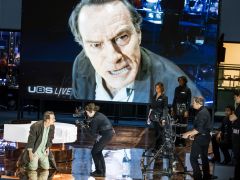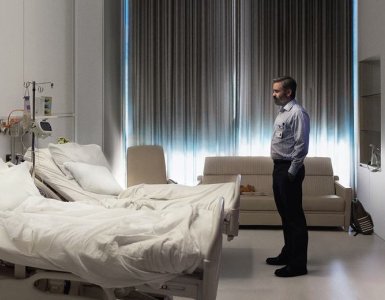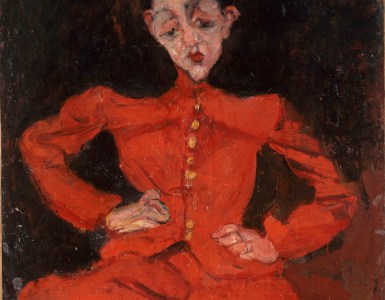Note: This article contains text from reviews I have written for moviemanjames.com, and London Student over the course of the last year.
I like movies. You may have noticed that by now. Time and time again, people have come up to me over the last couple of months and professed that 2017 has been a weak year for film: that there’s been little to like and very little to love.
To them, I ask, have you been to a cinema in the last 12 months? Sure, this has been a poor year for the franchise bloatbuster™, with Justice League, The Last Jedi, Wonder Woman, Civil War, and Homecoming all landing squarely on the distinctly ‘meh’ mark. But, slightly behind the scenes, 2017 has been a remarkable time to be a film fan: a year to remember.
We’ve seen the emergence of multiple directing talents to rival the current cream of the crop; we’ve seen the releases of some of the most important sequels ever made; we’ve seen the creation of a whole new type of horror movie; hell, we’ve even witnessed what is, perhaps, the most disturbing film ever to get wide distribution. But what’s more, we’ve seen the dawn of a new type of movie altogether (I’m looking at you David Lynch), and the greatest piece of science-fiction since 1968. 2017 wasn’t just a good year, it was a game-changer.
So without further ado, I present to you my top 10 of the annum; a list that was painfully hard to write. I’ve restricted it to films released in the UK in 2017, so some films I’ve raved about over the past few months won’t be included.
10. Hounds of Love
2017 has been the year of horror, so what better way to start it off than with Ben Young’s morally dubious Australian true-crime thriller. Difficult to watch, evading any easy answers, and proving to be brutally tense, Hounds of Love is a provocative slice of sickening cinema that begs to be seen by audiences prepared for something unpalatable.
But, most striking of all, Young brings a distinctive, flashy style to the proceedings with liberal use of ultra-slo-mo, grindhouse grain, and in-camera effects. Add to this the Vangelis-esque score, which combines juicy retro synth tracks with Cat Stevens, Joy Division, and The Moody Blues, and we have a striking, singular piece of work which resonates with the viewer long after the credits roll.
Its spitting-image resemblance to real-life murders has the potential to leave a sour taste on the tongue, but that’s just one of the ways Hounds of Love asks important questions about voyeurship and portrayal in the media. Tactfully, Young never stoops as low to dwell on the infliction of violence: this is a film about killers, not killings.
9. Free Fire
Hot on the heels of the brilliant High Rise, Ben Wheatley has proved himself again with this 70s-set, deliriously scuzzy farce, demonstrating that sometimes, less is indeed more.
A stellar cast of players including Michael Smiley, Brie Larson, Sharlto Copley, and Armie Hammer (among others) essentially spend the entire 91-minute runtime shooting at each other in one cavernous warehouse; with an absurd nonchalance which allows the action to slip into fantastic slapstick. Free Fire gets brownie points for understanding the in-and-outs of a true Mexican standoff, where nobody can hit anybody, and where bullets whistle through the air with a malevolent shriek. The sound design that’s gone into making every impact, glass break, and injury sound tetanus-injection real is absolutely insane. Wheatley and Jump are masters of their craft: taking a brutally simple premise with nowhere to hide, and transforming it into a deeply satisfying, funny, and thrilling movie which more than deserves its place on this list.
8. It Comes At Night
A bleak, tense, and at times terrifying trip into the heart of the unknown – one that’s unlikely to leave you for a good few days afterwards. Trey Edward Schults has crafted one of the most unique horror movies I’ve ever seen; one which suffered from a rare mismarketing step by A24 to be sold as a jumpscare-infested haunted house.
That’s not to say it’s unscary: in one particular scene, a main character finds himself deep in the woods, pointing a gun at a tree. I don’t know how Schults did it: perhaps it was in the sound design, or perhaps it had something to do with the framing, but in that exact moment I felt something like true fear – something primal and raw – an urge to run away as fast as I could. Similarly, there’s a scene involving a young child lying on the floor that brought on the goose-bumps as if pheromones were wafted into the auditorium.
This is fantastic stuff, but what really sold It Comes at Night for me was how it makes the viewer search the screen for clues. Whether it’s the edges of the picture, the eyes of the characters, cracks of light under doors, or movement in a still forest, Schults is always encouraging a deeper look. The dimensions of the picture, ingeniously, are incredibly important to unlocking its secrets. These little details, some calculated to be subliminally felt and some to be explicitly noticed, really elevate the film to another level beyond what we call ‘the cinematic experience’: to some meta-level where form delineates the narrator, and their state of mind.
7. T2 Trainspotting
One of the finest sequels of the 21st century: raw, stylish, and passionate. Danny Boyle took his own cult classic from 1996 and pulled it in a different direction to which nearly everybody expected. Gone were the heroin-fuelled hijinks, and adrenaline-packed criminal rampages of youth.
In their place was a melancholy, nostalgic look at getting older, losing touch with childhood friends, and lacking the drive of the young. That’s not to say that T2 felt the need to treat its aging protagonists with grace: it’s a candy-coloured, kaleidoscopic montage of inventive shots (some so risky it beggars belief), complete with an astoundingly impressive soundtrack to rival its predecessor, and a perfect narrative that morphs into a stunning locked-room thriller. Powerful, emotional, and deeply skilful work which honours and builds a more nuanced picture of characters beloved by a whole generation.
6. Brawl in Cellblock 99
Ingeniously structured, and unbearably violent, S. Craig Zahler proves he is the next Quentin Tarantino with this perfectly paced exploitation thriller.
Vince Vaughan delivers a powerhouse, career-changing performance as a man who tumbles down the rabbit hole over the course of a relentlessly pessimistic two hours. From the get go, until the very end, Zahler cranks the situation up one notch at a time, never letting things improve for one second. In this way, we are constantly experiencing freefall: thrilling, uncontrollable, and unhinged. It also means the plot can transition from ‘believable’, to ‘somewhat believable’, to ‘unbelievable’, to ‘pure fantasy’; but by the time we realise the entire affair is up shit creek in cloud-cuckoo land, it’s far too late – like when a frog is placed in cold water and the hob is turned on until it boils. And when the water boils, by god, it boils: Brawl in Cell Block 99 features some of the most disturbing violence in recent cinema memory.
Running at a whopping 132 minutes, the movie never drags. It’s a lean, mean, angry freefall, becoming ever more deranged and violent before smacking onto the concrete and splattering over the screen in all it’s icky, sticky glory.
5. Get Out
A socially relevant, totally cool, and superbly stylish chiller by directing newcomer Jordan Peele that’s unique and intense in equal measure.
Daniel Kaluuya stars in a fresh, intriguing race-relations thriller plot; blending science-fiction, cult-horror, and Blumhouse production into one unholy cocktail of a movie.
This is one of the best horror films of the decade. It’s creepy as hell, funny as fuck, and beautiful to look at. It has a perfect sound design, tempo, and colour palette. But it also has something to important to say and discuss as well. Indeed, a subject which it discusses to great length, and in one of the most thought-provoking ways possible. As far as Peele is concerned, as long as things go on the way they’re going, African-Americans will always be trapped in ‘the sunken place’. Get Out makes other horror movies look boring in comparison.
4. mother!
As the trailer says, ‘you’ll never forget where you were the first time you saw mother!’. I certainly won’t; for my money, it’s the most disturbing (fictional) story ever committed to celluloid.
Major props to Paramount for greenlighting this devastatingly nightmarish odyssey into the recesses of human experience. Aronofsky returns here to top form with an enigmatic (at first), sordid, and ingeniously filmed tale that feels custom built to encourage audience walkouts. The story, which should never be revealed (in ripe Hitchcockian fashion) is ridiculously unpredictable; giving the action an unhinged, chaotic feel, and making the audience’s screams remarkably genuine. Furthermore, once the true plot arc becomes clear, Arronofsky manages to ramp mother! up to 11 (and perhaps even 12) with a 30-minute long rampage of stunning cinematography which will test the mantle of those who found A Serbian Film to be child’s play. It’s tense, totally original, and completely fucked up (not to mention being shit-your-pants scary): the exclamation point is necessary.
3. Good Time
Good Time is more of an experience than a ‘movie’ in the traditional sense. It’s a hallucinogenic, aggressive piece of work by the Safdie Brothers which spirals out over the course of only a few hours – yanking us along not so much as an accomplice, but rather as a body dragged through New York by a smoke-spewing sports car. It’s Enter the Void by way of Hotline Miami: an ultra-violent, crazed, epilepsy-inducing frenzy set in a perpetual night, taking place at roughly the same speed we’re watching it. This is right here, right now cinema – so undeniably, inescapably present that you can’t help but feel involved in the action.
It’s also not one to watch on a hangover: brash, loud, and nauseatingly colourful, Good Time turns the theatre into more of a funfair than the cinema. It’s a full frontal sensory assault of the highest order, and a pure cinematic spectacle the likes of which are usually reserved for top-tier blockbusters. The title may be ironic for its fractured characters, but for the audience, it’s spot on – even if it did give me a bit of a headache.
2. Twin Peaks: The Return
The subject of whether The Return should be on film-based lists has proved quite controversial as of late, but David Lynch himself has stated that it is an 18-hour movie.
A late-career masterpiece, The Return blends every aspect of vintage Lynch into one gargantuan, enigmatic, and mind-bending smoothie that dissects the entire nature of entertainment with disarming ease. Amongst the indescribable ephemeral nuances of dream-logic that Lynch specialises in, we had some of the most terrifying, dark, and sinister moments in his oeuvre; yet we also had some of the warmest, funniest, and most ecstatic rays of cinematic sunshine.
But, perhaps most of all, Lynch keeps everyone on edge by refusing to deal any of the cards which we could have expected. Chucked into the mix are now fewer than three (three!) characters played by Kyle McLaughlan, performances from an astounding array of musicians, a colour pallete to die for, and a 25 minute long stargate-esque sequence which simultaneously explained the very existence of evil in the universe whilst also providing the equivalent of pure cinema.
A horror, a comedy, a drama, a science-fiction, a fantasy, a soap-opera, and an ultra-prestige avant-garde art film; The Return is something that only David Lynch could give us. Relying on the iconic cultural heft of the Twin Peaks of the 90s, combined with viewers readjusted notions of what TV, or even entertainment, can be in the 21st Century, Lynch dragged us into a trippy wormhole that, frankly, I was sad to eventually escape from.
1. Blade Runner 2049
In October, Denis Villeneuve pulled out all the stops to deliver a monumental sequel to a monolith of science fiction; remarkably more nuanced, beautiful, and ambiguous than its predecessor.
It’s a dreamy, ponderous wonder: filled with smog and neon, ambiguous characters, and hypnotic images. A big, adult, sweary, sexy, violent behemoth of a blockbuster which reaches what Herzog once called ‘ecstatic truth’. Villeneuve demonstrates, from every angle, the indefinability of humanity, asking us to question who we are altogether.
But, most refreshingly, 2049 wasn’t afraid of its audience, and nor did it look down on them. It moved slowly, determinatively, from its humble beginning to its humble end with minimal dialogue or unnecessary exposition. And, along the way, we got to witness some of the most mesmerising visuals of the 21st Century. The most important, thought-provoking, and utterly beautiful work of science fiction since 2001: A Space Odyssey.
There are so many things I could’ve included here that would’ve likely made the list in previous years: the marvellous Elle, the fantastically enjoyable It, and the magnificently cinematic Dunkirk among others. I haven’t even mentioned stellar critical hits like The Florida Project and Call Me by Your Name. But, if anything, this hardship just goes to show that 2017 has been a mind-blowing year for cinema. If 2018 even comes close, I’ll be incredibly surprised.








Add comment